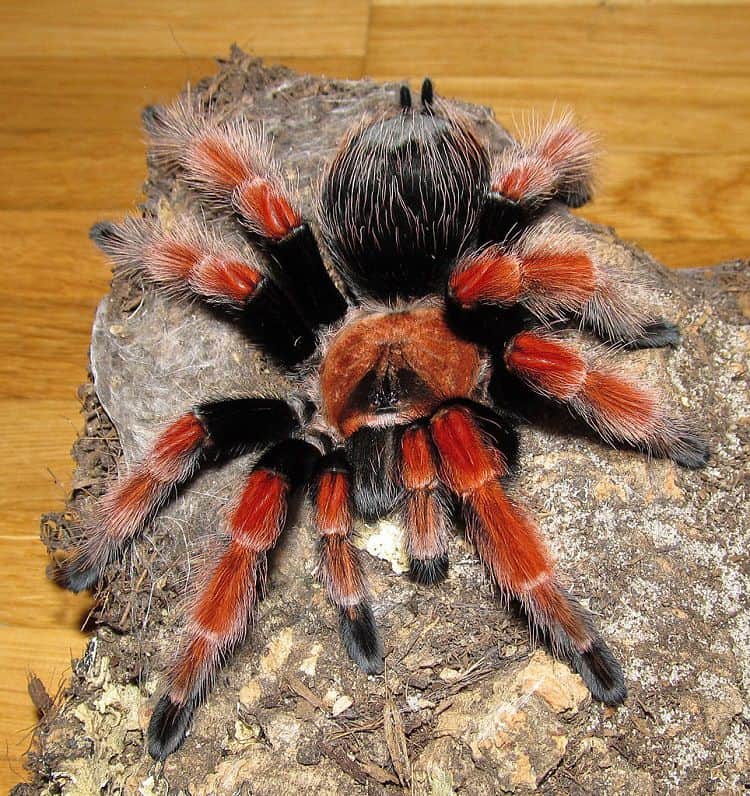Table of Contents
Tarantulas might not be everyone’s first choice when it comes to cute and cuddly pets, but there are those who absolutely love these furry arachnids and wouldn’t have any other pet. If you are a tarantula fan and have recently become an owner of one of these spiders, you’ll probably be interested in learning everything you can about these fascinating creatures. Indeed, you might want to know more about things they do and why they do them. In this article then, I will discuss some tarantula behaviors and whether or not these are considered normal.
behaviors and whether or not these are considered normal.
Why is My Tarantula So Active?
Although tarantulas can move amazingly fast when they need or want to, they usually move about very slowly; this is mainly due to the fact that they do not have the best eyesight. Instead, they feel their way around, using vibrations and their sense of smell and hearing. By moving slowly, they get a better sense of their environment.
However, there are times when your tarantula will be much more active, which might give you a cause for concern. There are a number of reasons why your tarantula might be climbing the walls and moving about much more than normal; one of these may be that it is searching for a mate. During mating season, your spider might roam its enclosure searching for another tarantula to mate with.
Tarantulas also become more active when they are hungry or when they have been recently moved to a new enclosure. If you have recently purchased your tarantula, it will likely be exploring its new surroundings; however, if you have had it for some time, try offering food to see if it is hungry.
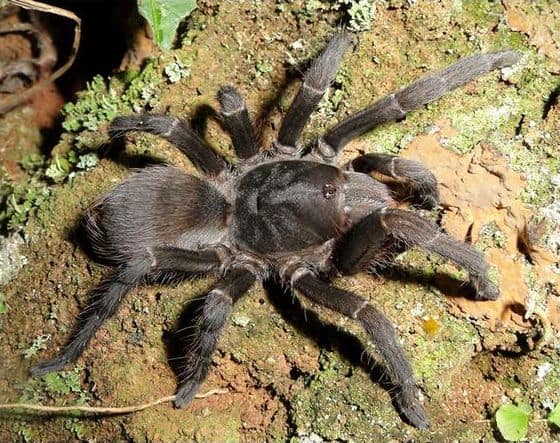
Acanthoscurria gomesiana 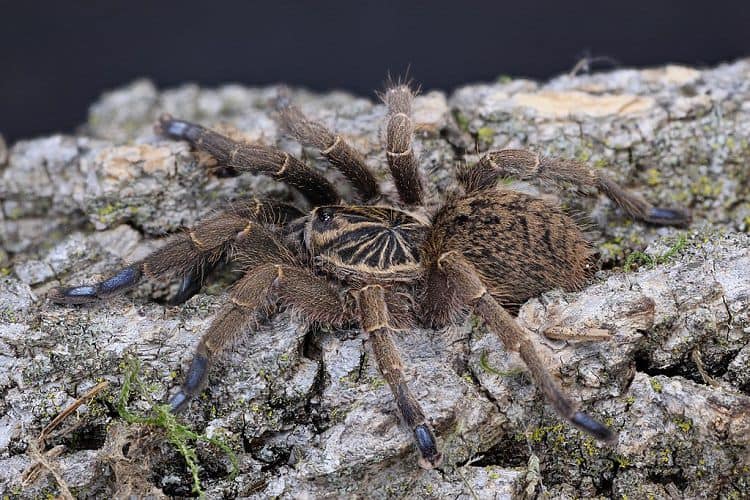
Blue Foot Baboon 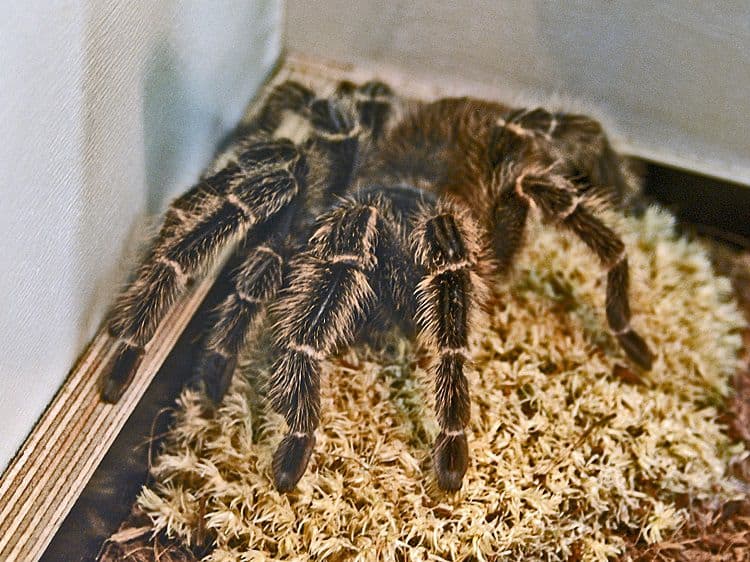
Brazilian Red Birdeater
If the tarantula is not hungry, you need to consider other causes. It could be that something is not quite right in the tarantula’s enclosure. For example, is the temperature too hot? Is the humidity level not right? If the enclosure is too dry the tarantula could become dehydrated. Check the enclosure to ensure that the temperature is correct (75F to 80F) and that humidity levels are right for the species of tarantula that you have.
Make sure there is a small, shallow dish of water in the tarantula’s enclosure too. Although it is likely your spider will get most of its water from the food it eats, it is good practice to provide access to water to ensure it does not become dehydrated. It also helps with humidity levels within the enclosure.
If all of the above check out but your tarantula still appears much more active than normal, consider the possibility of parasites. It might be worthwhile contacting an exotic vet for advice; it is always better to be safe than sorry.
Why is My Tarantula Not Moving?
While an overly active tarantula might be something you encounter from time to time, so too is a tarantula that barely moves for days on end. The reasons this might occur are usually something completely normal.
Just before a molt, for example, tarantulas try to conserve energy and will either stop moving much or sit completely still for days. You might also notice that yours is refusing to eat. This is also quite common behavior before a molt.
Check out the joints on your tarantula’s legs to see if there are any small droplets of fluid. Not all tarantulas secrete this fluid before a molt, but many do; if you notice it then this is a clear indication that a molt is imminent.
You might also see your tarantula lying on its back or side. Although this might cause alarm, you shouldn’t worry unless your pet’s legs are curled tightly inwards (this is the position tarantulas take when they die). Lying on their side or upside down helps with the molting process.
Why is My Tarantula Hiding?
Something that often upsets new tarantula owners is their spider hiding. This is quite common behavior though, especially when pre-molt. The stress of an impending molt can make tarantulas hide out in their enclosure, almost as though they are away from prying eyes.
Some tarantulas like to hide out for days, even weeks, even when not molting. If your tarantula is hiding and refusing food, it is unlikely to be anything to worry about. As mentioned above, before a molt, tarantulas tend to stop eating and moving about in order to conserve as much energy as possible. Make sure you provide fresh water daily as your tarantula might be drinking at night but avoid providing food until you see it moving about.
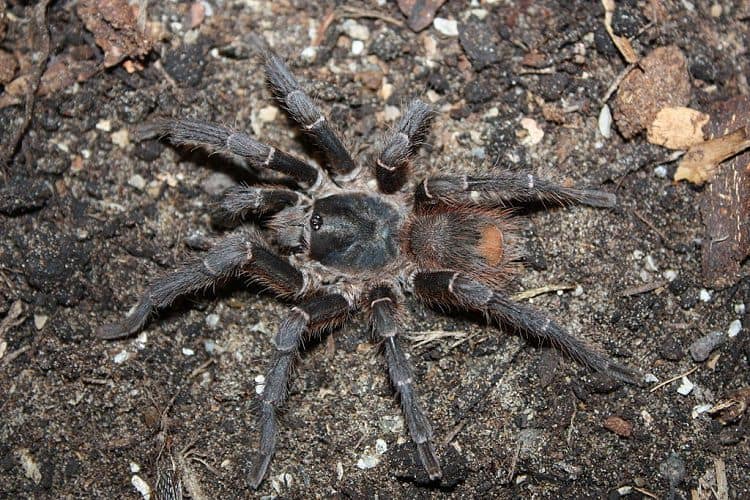
Acanthoscurria theraphosoides 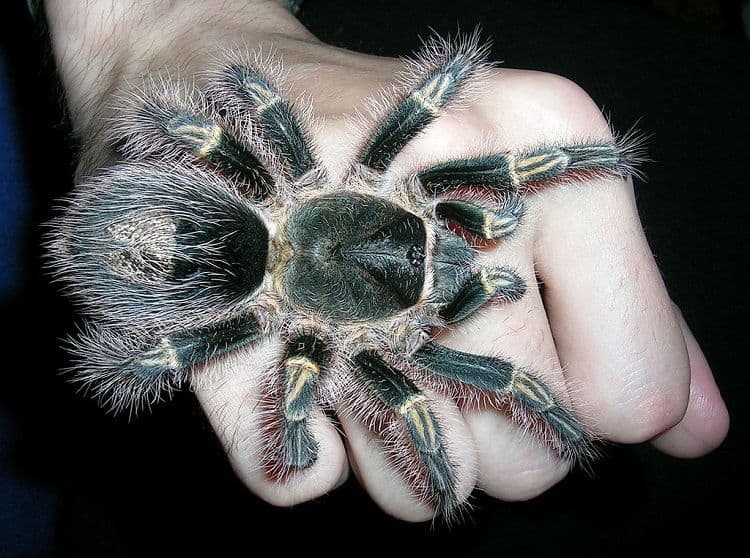
Chaco Golden Knee 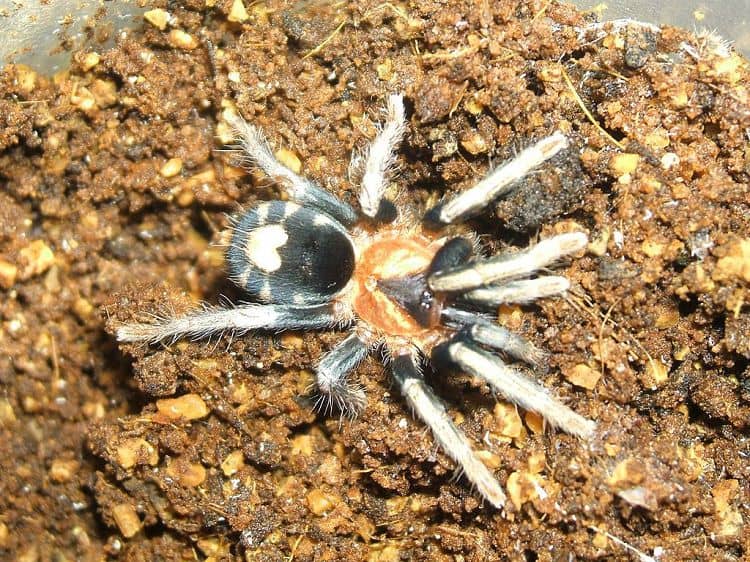
Trinidad Dwarf Tarantula
Why is My Tarantula Standing Tall?
Tarantulas raise themselves up by lifting their front legs when they feel that there is a threat on the ground. They do this to ward off would be attackers and also to avoid anything on the ground rupturing their abdomens. If you notice your tarantula doing this, it might be that it does not like the substrate in its enclosure. If the substrate is uncomfortable or too damp, your tarantula might be trying to elevate itself away from it.
Why is My Tarantula Laying Flat?
The first time new tarantula owners see their pet laying completely flat with their legs splayed as if they have been squashed usually brings with it a moment of panic. Nevertheless, rest assured that this is completely normal behavior and something that a lot of tarantulas do. It is behavior that often occurs in the days following molting, but they will also do it at random times. Most experts are of the consensus that it is a way for the creatures to stretch.
laying completely flat with their legs splayed as if they have been squashed usually brings with it a moment of panic. Nevertheless, rest assured that this is completely normal behavior and something that a lot of tarantulas do. It is behavior that often occurs in the days following molting, but they will also do it at random times. Most experts are of the consensus that it is a way for the creatures to stretch.
Conclusion
Tarantulas are fascinating pets and bring much delight to their owners. The above are just some of the more common behaviors to look out for in your spider. Most are completely normal and nothing to be concerned about.
However, as always, if you be concerned for the health and wellbeing of your tarantula, I recommend seeking expert advice from a local exotic vet.
Photo Credits:
- Featured Image (Mexican Fireleg): Micha L. Rieser

- Chaco Golden Knee: PavelSI – public domain
- Acanthoscurria gomesiana: Source: Hector M. O. Gonzalez-Filho, Sylvia M. Lucas, Felipe dos S. Paula, Rafael P. Indicatti, and Antonio D. Brescovit (2012) “On the Taxonomy of Acanthoscurria Ausserer from Southeastern Brazil with Data on the Natural History of A. gomesiana Mello-Leitão (Araneae, Mygalomorphae, Theraphosidae)”, International Journal of Zoology, vol. 2012. doi
 :10.1155/2012/721793
:10.1155/2012/721793 Figure 1
Figure 1 – CC BY 3.0
– CC BY 3.0 .
. - Blue Foot Baboon: Quengsalinas – CC BY-SA 4.0
 .
. - Brazilian Red Birdeater: Hectonichus
 – CC BY 3.0
– CC BY 3.0 .
. - Trinidad Dwarf Tarantula: Morkelsker – public domain
- Acanthoscurria theraphosoides: Sjl197 – CC BY-SA 4.0
 .
.

